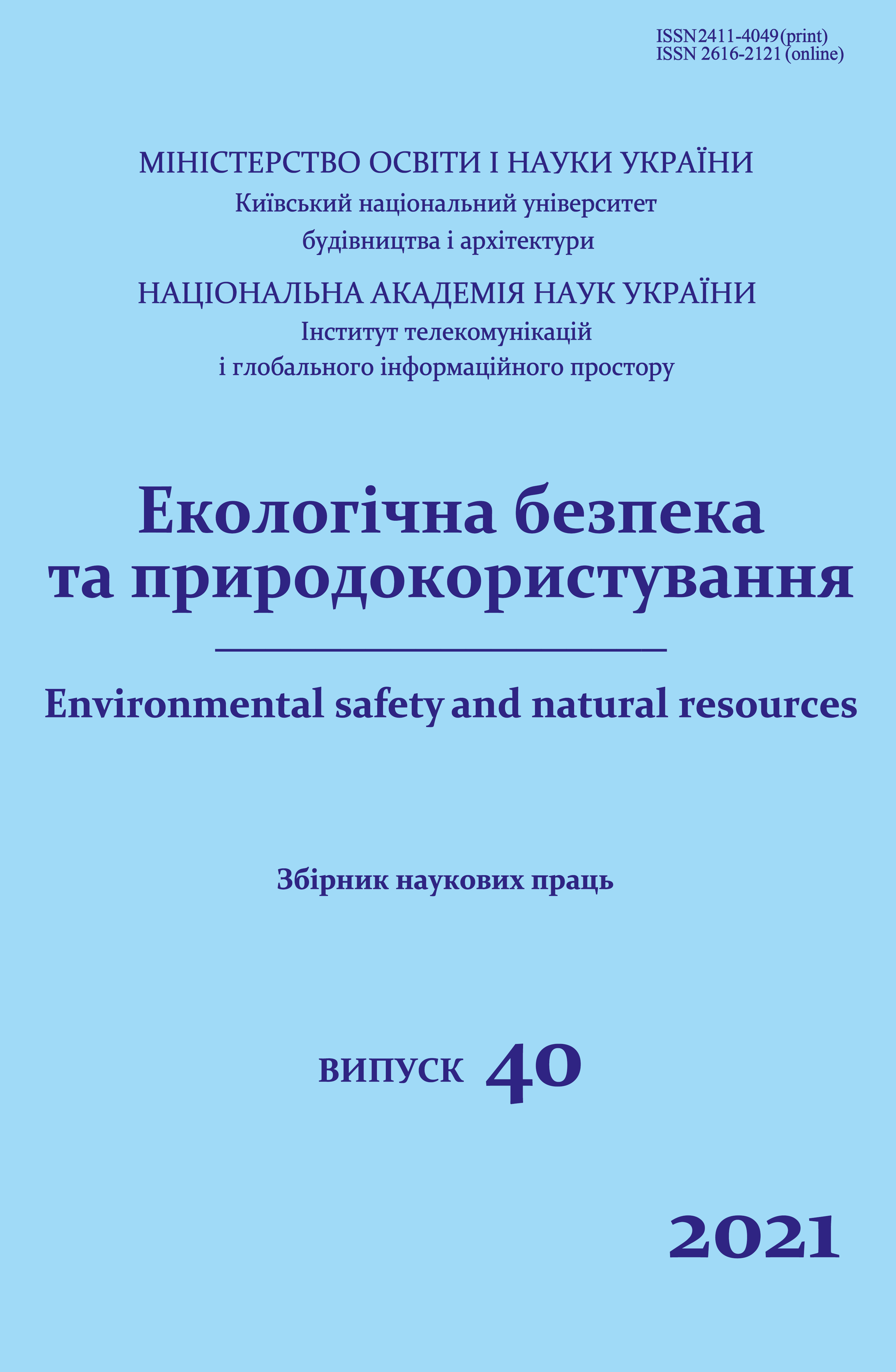Restoration of cross-border Ukrainian-Polish man-made territories of Roztochia by phytomeliorative methods
DOI:
https://doi.org/10.32347/2411-4049.2021.4.100-109Keywords:
Roztochia, environmental monitoring, photosynthesis, fluorescence, recultivation, mycorrhizaAbstract
Extraction leads to the formation of specific anthropogenic landscapes, which are mining. They are inferior in the area to agriculture and forestry. As a result, the lithogenic basis of landscapes is broken, and there is a fast alteration of a surface therefore the man-made neo relief is formed.
The purpose of the work is theoretical substantiation of phytocoenotic bases of afforestation of dump landscapes and practical realization of biological-coenotic grounds of technology of creation of forest cultures on the reclaimed lands which correspond to concepts of nature conservation paradigms and are based on data of morphophysiological monitoring and application of mycorrhizal technologies.
The object of comparative studies are selected syngenetic phytomeliorants: common reed (Phragmites australis); buttercup caustic (Ranunculus acris); horsetail (Equisetum arvense); Reed warbler (Phalaroides arundinacea); goat willow (Salix coprea). The experimental material was taken from the territory of underground smelting of sulfur, areas adjacent to Yavoriv quarry, control samples – from the adjacent intact area. Quantitative determination of pigments was performed by the standard spectrophotometric method, as well as by the method of derivative spectroscopy. The activity of the photosynthetic apparatus was studied by photoinduced chlorophyll fluorescence.
Studies have shown statistically significant changes in the quantitative composition of plastid pigments in plant leaves in all studied areas compared to their appropriate background values.
The technology of forest reclamation of anthropogenic geocomplexes has been developed and tested by creating silvicultural areas based on mycorrhized planting material. The system of landscape-ecological reclamation measures, together with complex ecological monitoring, serves as a basis for sustainable development of cross-border Ukrainian-Polish man-made territories of Roztochia.
References
Biliavskyii H. O., Padun, M. M., & Furduii, R. S. (1993). Osnovy Zahalnoi Ekolohii. "Lybid" (in Ukrainian).
Tyuleneva, T. (2018). Environmental consequences of coal mine elimination. In Proceedings of the 9th China-Russia Symposium “Coal in the 21st Century: Mining, Intelligent Equipment and Environment Protection". https://doi.org/10.2991/coal-18.2018.65
Štofejová, L., Fazekaš, J., Fazekašová, D. (2021). Analysis of heavy metal content in soil and plants in the dumping ground of Magnesite Mining Factory Jelšava-Lubeník (Slovakia). Sustainability, 13(8), 4508. https://doi.org/10.3390/su13084508
Kopach, P. I., Horobets, N. V., Danko, T. T., & Bondarenko, L. V. (2009). Osnovni polozhennia metodolohii stvorennia systemy monitorynhu navkolyshnoho seredovyshcha hirnychodobuvnykh rehioniv. Ekolohiia I Pryrodokorystuvannia, 12, 181-187 (in Ukrainian).
Prokhorova, N. V., & Kavelenova, L. M. (2003). Problemy orhanyzatsii systemy fitomonitorynga gorodskoi sredy v uslovyiakh lesostepu. Yzd-vo «Samarskyi universytet» (in Russian).
Rudko, G., & Shkitsa, L. (2002). Ecological consequences of the activity of Western Ukraine mining complexes. Rocznik AGH, Wiertnictwo Nafta Gaz, 19/2, 415-418.
Dzhumelia, E., & Pohrebennyk, V. (2021). Methods of soils pollution spread analysis: Case study of mining and chemical enterprise in Lviv region (Ukraine). Ecological Engineering and Environmental Technology, 22(4), 39-44.
UNDP and UN Environment. (2018). Managing mining for sustainable development. A sourcebook. Bangkok: United Nations Development Programme.
Rhind, S. M. (2009) Anthropogenic pollutants: a threat to ecosystem sustainability. Phil. Trans. R. Soc. B, 364, 3391-3401.
Lee, S., Ji, W., & Yang, H. (2017). Reclamation of mine-degraded agricultural soils from metal mining: lessons from 4 years of monitoring activity in Korea. Environ Earth Sci, 76(720), 1-7.
Carvalho, F. P. (2017). Mining industry and sustainable development: time for change. Food and Energy Security, 61-77.
Bryk, M., & Kołodziej, B. (2009). Reclamation problems for the area of a former borehole sulfur mine with particular reference to soil air properties. Land Degrad. Dev., 20, 509-521.
Brovko, F. M. (2009). Lisova rekultyvatsiia vidvalnykh landshaftiv Prydniprovskoi vysochyny Ukrainy: monohrafiia. "Aristei" (in Ukrainian).
Trohimchuk, S. V., Kovalchuk, I. V., & Kravchuk, Ya. S. (1978). Nekotorye aspekty izucheniya antropicheskih izmenenij pripody Zapadnogo Podolya. In Tez. dokl. resp. nauchn. konf. "Pripodnye resursy Karpat i Pridnestrovya, voprosy ih racionalnogo ispolzovaniya i ohrany" (pp. 125-127) (in Russian).
Kapustianyk, V. B., & Mokryi, V. I. (2004). Optyko-spektralni metody v naukovo-tekhnichnii ekspertyzi: Praktykum. "Vydavnychyi tsentr LNU imeni Ivana Franka" (in Ukrainian).
Lomnytska, Ya. F., Vasylechko, V. O., & Chykhrii, S. I. (2011). Sklad ta khimichnyi kontrol obiektiv dovkillia. Lviv: Novyi Svit-2000 (in Ukrainian).
Kopii, L. I., Mokryi, V. I., & Oliferchuk, V. P. (2009). Ekspres-testuvannia ta optymizatsiia fitomeliorantiv devastovanykh landshaftiv Yavorivskoho HPR. In Zakhyst navkolyshnoho seredovyshcha. Enerhooshchadnist. Zbalansovane pryrodokorystuvannia. Zb. materialiv I Mizhnarodnoho konhresu, (pp. 41-42). Lviv: Vydavnytstvo Natsionalnoho universytetu «Lvivska politekhnika» (in Ukrainian).
Hladun, H. B., & Demianenko, L. V. (2009). Lisivnytstvo i ahrolisomelioratsiia. Kharkiv: UkrNDILHA, Vyp. 115 (in Ukrainian).
Ivanov, Y. A. (2001). Ekoloho-landshaftoznavchyi analiz hirnychopromyslovykh terytorii (na prykladi Lvivskoi oblasti) (Doctoral dissertation) [Abstract] (in Ukrainian).
Mokryi, V., Kopiy, L., Paslavskyy, M., & Pankivskyy, Y. (5.11.2010). The complex monitoring of the degraded landscapes of Chervonograd mining-industrial region. In Międzynarodowa konferencja naukowo-techniczna «Przyrodnicze wykorzystanie ubocznych produktow spalania wegla, biomasy oraz wegla z biomasa» (pp. 41-44). Szczecin-Ostoja: Zachodniopomorski universytet technologiczny w Szczecinie.
Downloads
Published
How to Cite
Issue
Section
License
Copyright (c) 2021 Volodymyr Mokryi, Ihor Petrushka, Elvira Dzhumelia

This work is licensed under a Creative Commons Attribution 4.0 International License.
The journal «Environmental safety and natural resources» works under Creative Commons Attribution 4.0 International (CC BY 4.0).
The licensing policy is compatible with the overwhelming majority of open access and archiving policies.

